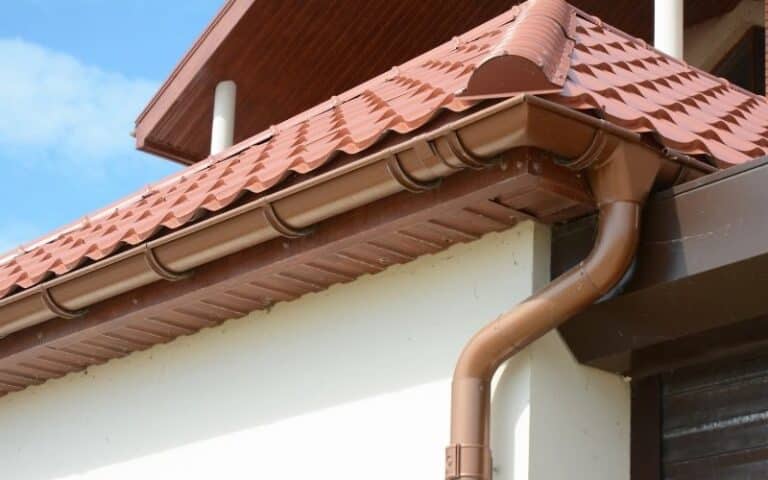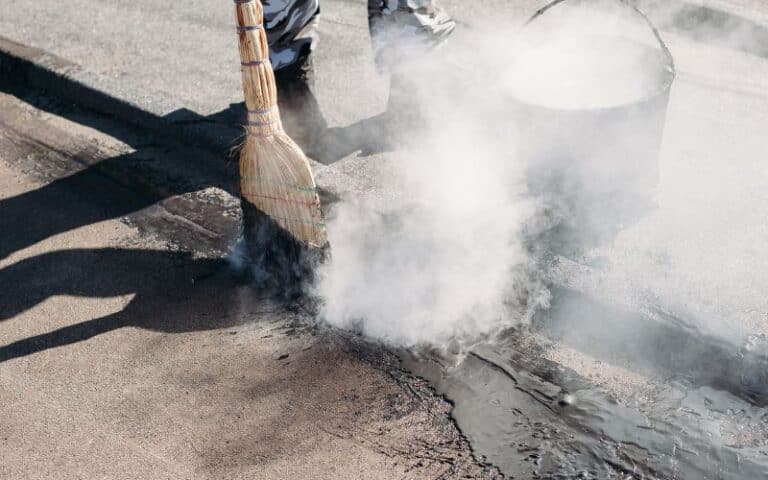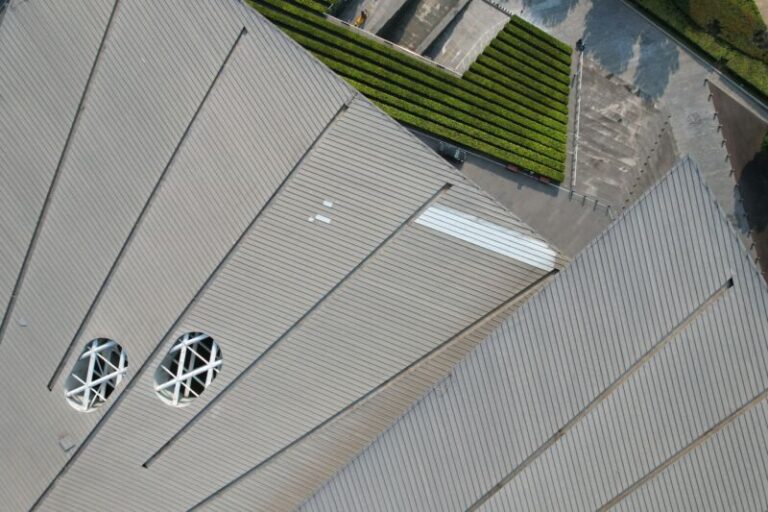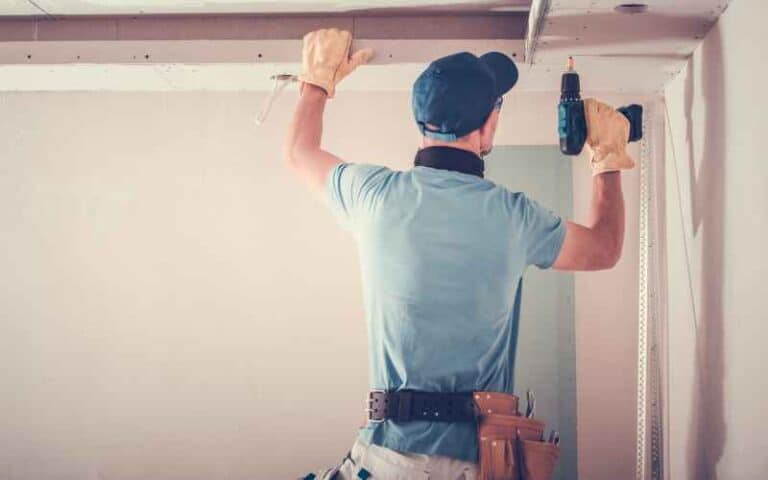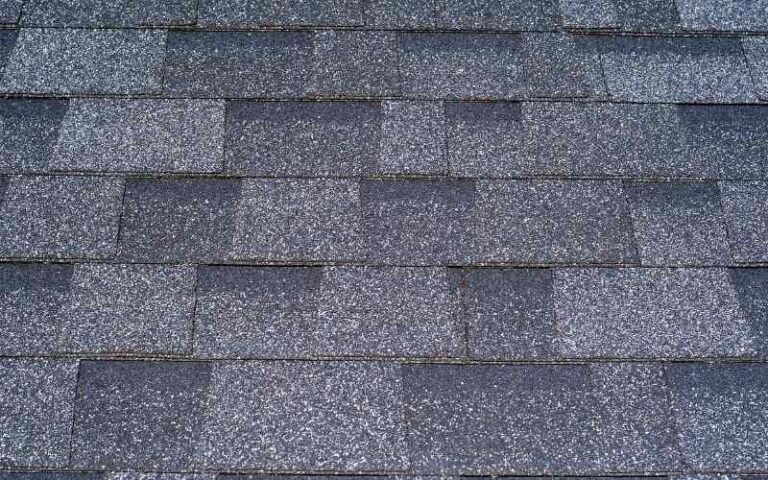If you are into the roofing niche, you must have heard of Thermoplastic Polyolefin (or TPO for short).
TPO roofing is among the commonest roof types for commercial buildings and is one of the most energy-saving roofing systems.
That said, can you glue TPO to TPO? Stick around as you’ll discover the answer to this question and many more. Let’s begin, shall we?
You can glue TPO to TPO depending on the condition of your TPO roof. If your TPO roof is in a moderate damage state, you can cover a new TPO layer on top of the old TPO membrane over the site of damage. This method is cost-effective.
Ready for a Roofing Quiz?
Can TPO Go on TPO?

Yes, TPO can go on TPO depending on the existing conditions of your old TPO roof. If your old TPO roof is badly damaged, then the whole structure needs to be replaced with a new TPO roof.
However, if the damage is moderate, you can glue a new TPO layer on top of the old TPO membrane. That should be over the site of damage, such as leaks.
This method is called the “recovering method,” and you cover an old TPO membrane with a new one. If the TPO roof is damaged mildly, then repairing only the site of damage is enough.
How Long Does a TPO Roof Last?
TPO roofs are remarkably well known for their durability if you install and manage them properly.
It has a life expectancy of approximately twenty-two to thirty years in connection with the service life of the building.
TPO is long-lasting because you can combine it with a top coat that reflects light and heat during summer.
It also reflects deteriorating ultraviolet rays, which is a leading cause of untimely roof deterioration.
If you hire an authorized commercial roofer, they will consider standardized seam fastening around parapets and HVAC curbs. That will help reinforce the roof.
If you carry out a yearly or six-monthly maintenance assessment and fix minor repairs, TPO can exceed its designed lifespan by an additional year.
They’re an outstanding single-ply roofing membrane made of rubber or synthetic materials used to shield flat roofing in commercial buildings.
It can be ballasted, mechanically fixed, or chemically adhered to the insulation, which adds to its resilience and durability.
Can You Use TPO on Seams?
Yes, you can use TPO on seams. However, there is a catch – you must hire a skilled roofer to carry out the installation process.
The seam on TPO is sealed with heat or hot air until it infuses the flashing. Inappropriate quality in sealing seams can lead to defects.
Additionally, it may not last as long as it should if the installation is not done properly. Some companies specialize in installing TPO roofs that you can hire for a professional service.
Are TPO Roofs Good?
TPO is a modern invention for flat roofing. The membrane is available in several widths, particularly 45, 60, or 90 millimeters. It is good for certain specifications.
It is well-known among commercial buildings because it is made up of a mixture of two types of rubber materials: polypropylene and ethylene-propylene.
Here are some of the reasons why TPO roofing is good:
#1. Aesthetically Fascinating
- It can look good on various buildings because of its numerous colors, such as white, grey, and black.
- They are not restricted to a particular look.
#2. Energy-Effective Roofs
- TPO roofs are effective due to their light color and ability to reflect the heat and energy radiated by the sun.
- Furthermore, it can resist ozone and chemical exposure, protecting the internal structure from hot weather conditions.
- It also reduces the additional cost incurred from air conditioning to regulate a pleasant temperature.
- TPO is made from recyclable materials and is less dangerous to the environment than other well-known roofing materials.
#3. Cost-Effectiveness
- When roofing commercial buildings, several things are considered in line with the cost of an entire roof installation.
- Investing in a roof like TPO that is useful and considerably affordable compared to PVC is vital.
- TPO requires minimal maintenance.
#4. Environmentally Friendly
- TPO is a green roofing alternative made from recyclable rubber and does not have chlorine.
- It protects the environment and can be reused to make new TPO roofing.
#5. Anti-Leak Protection
- When TPO seams are merged using heat, they can resist possible leaks, making them much easier to repair.
#6. Durability
- Unlike most roofing membranes, the life span of TPO is long-term, holding up well to long-term exposure to the ultraviolet light emitted by the sun.
- It can withstand wear and tear, punctures, fire resistance, or water damage.
- They are foolproof to dirt buildup and bacterial advancement, making it simpler to clean roofs.
- That enhances their life expectancy.
#7. It’s Simple to Set Up
- Most of the time, commercial buildings close for some days because of roof replacement or installation.
- Professionals are usually employed to hasten the process, so business activities can quickly resume.
- TPO is lightweight and comes in wide sheets that are simpler to install.
- That saves you the extra time that you’ll spend on roofing.
#8. Flexibility
- TPO is not only flexible; you can adjust it to diverse roofs’ withstanding settings and movement.
- Apart from commercial buildings, they may also be used in residential buildings.
What Is the Cost of TPO Roofing?
The cost of TPO roofing is considerably affordable compared to other roofing materials. Numerous components affect and determine the overall price.
TPO is sold in rolls and mostly priced or quoted in squares, which is 100 square feet of roofing material.
Experts suggest that one square foot of TPO roofing ranges from $3.50 to $14.00. That implies that the price of a square of TPO can range from $350 to $1400.
Generally, the cost for insulation ranges between $1.50 and $3.50 per square foot. It would be best if you also flashed it to prevent water leakage and an attachment system.
Furthermore, insulation functions as a shield underlayment for TPO roofing, boosting temperature regulation within the building.
Depending mainly on the material and its thickness, the insulation cost can be greater than the cost of roofing TPO.
Commonly, the price of flashing is about $5 to $50. It would help if you flashed along the seams and corners to prevent water from leaking into the building’s internal structure.
The flashing you’ll need and the amount you’ll require depends on the roof you’re looking to wrap, whether there are any openings, dormers, a chimney, or anything attached to the roof.
Installing TPO roofing is not too difficult. Rough estimates show that roofing contractors may charge between $75 and $90 an hour for installation.
However, you can estimate between $1 and $2 per square foot for basic removal, and also note that the climate and hard-to-reach surfaces on the roof can increase TPO installation costs.
Below is a table showing the general TPO cost estimate.
| Cost | Price |
|---|---|
| Lowest | $6,000 |
| Average | $12,000 |
| Highest | $18,000 |
Conclusion
The TPO roof is one of the best roofing styles available. Besides being cost-effective and aesthetically pleasing, it is highly durable.
For this reason, you should hire the services of professionals to give you the best installation service possible.


